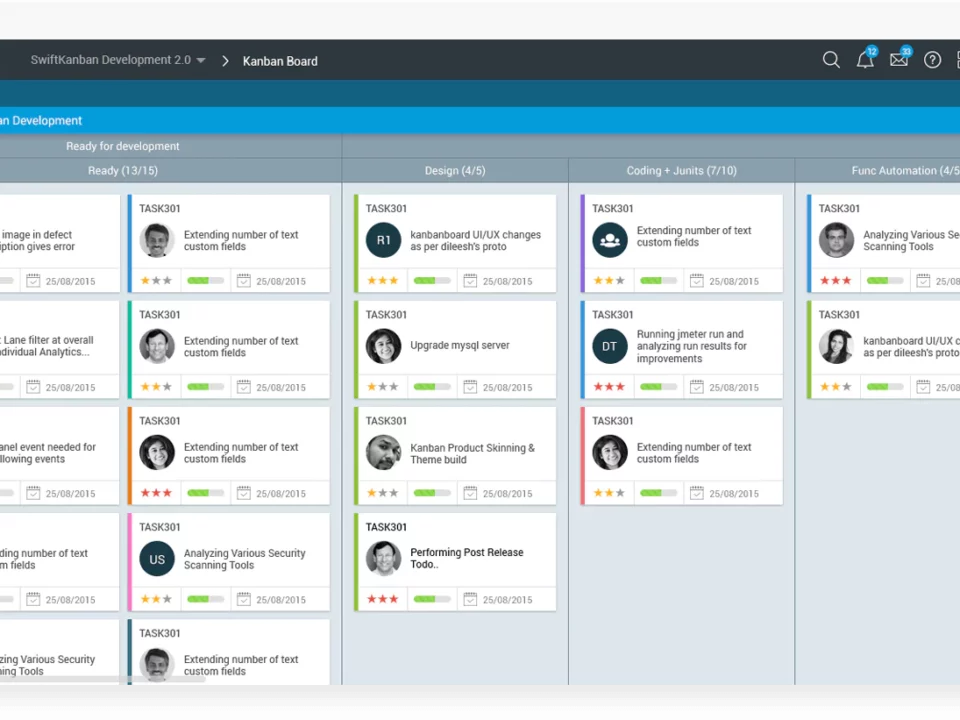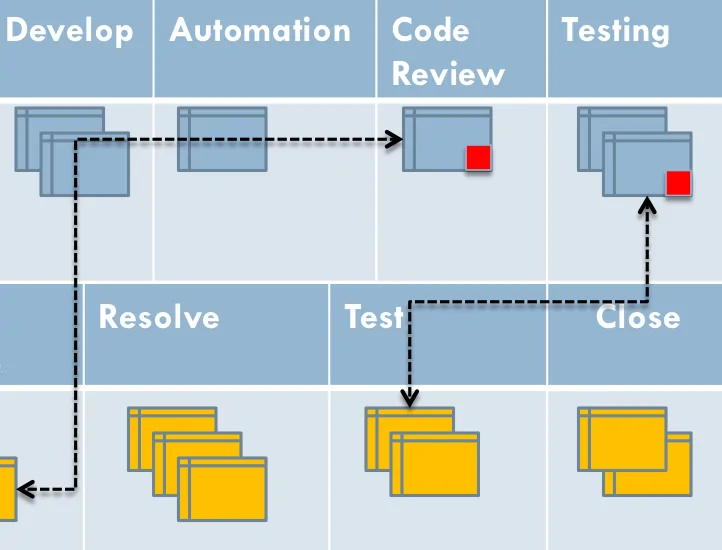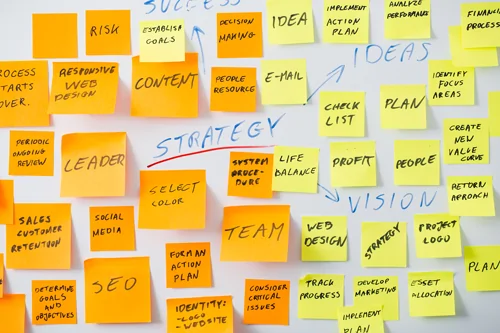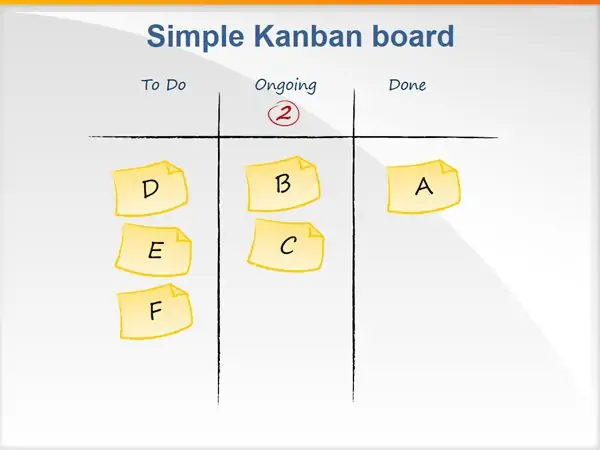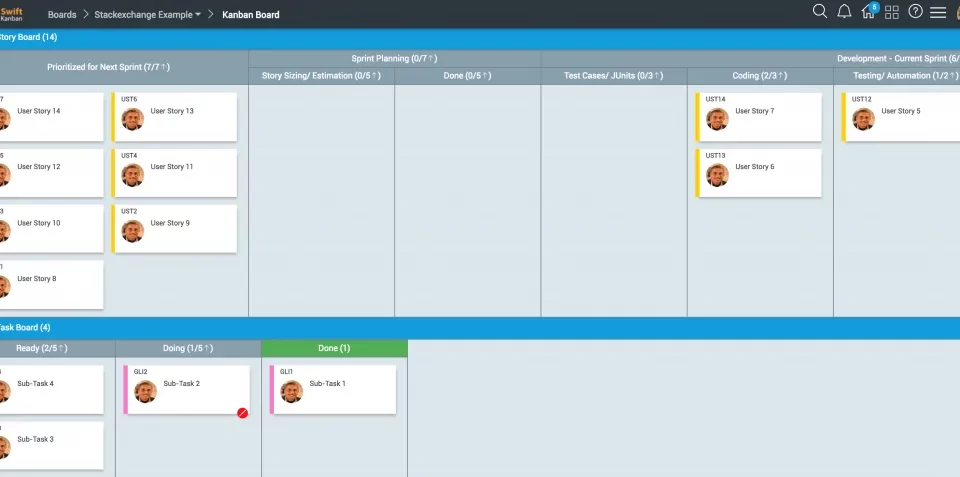- Filter by
- Categories
- Tags
- Authors
- Show all
- All
- agile
- Agile 101
- Books
- Brochures
- continuous improvement
- DAD
- Defect Management
- development
- Enterprise Kanban
- Kanban
- Kanban 101
- Kanban board
- kanban cadences
- Kanban in Marketing
- Kanban Tool
- Lean
- Lean Software Development
- Lean/ Kanban
- LeSS
- marketing management
- PI Planning
- PKFLOW
- Program Increment
- Release Train Engineer
- Replenishment Meeting
- SAFe
- Scaled Agile
- Scaled Agile Framework
- Scaling Agile
- Scrum
- Scrumban
- Test Management
- user story
- Visual Project Management
- Whitepapers
- All
- Muhammad Raza
- Anadi Misra
- Andrea Fryrear
- Repaka Anjana Likitha
- Anitej Rao
- Ashwin Swarup
- Ashwini Lalit
- Anshuman Singh
- Bhaskar S
- Bhavesh Siddamsettiwar
- Raghunath Basavanahalli
- Bash Sarmiento
- Bravin Wasike
- Burkhard Berger
- Carlos Schults
- Christina Sookram
- Christophe Achouiantz
- David Anderson
- Dave White
- Elizabeth Harrin
- Emily Shaw
- Emma Becker
- Florian Boldt
- Team Infosec
- Joaquin Aceron
- Jim Benson
- Julia Wester
- Karan Gadani
- Kshipra Bhat
- Linsa Saji
- Mahesh Singh
- Manikandan R
- Marjan Venema
- Masa K Maeda
- Mike Burrows
- Navin Anand
- NimbleWork PR
- Nishanth Mittu
- Niveditha Reddy
- Natalia Manha
- Priyank Parekh
- Ram Subramanian
- Rumyana Dancheva
- Roman Shvydun
- Rupal Kaushik
- Sai Prasanth M K
- Siddharth Dutta
- Simli Saha
- Srilekha Joshi
- Subhajit Sengupta
- Sudipta Lahiri
- Sunita Vyas
- Team ESG
- Varsha S
- Zach Watson
agosto 17, 2021
Published by Mahesh Singh on agosto 17, 2021
Categories
¿Cómo diseñas tu primer tablero Kanban? Este pensamiento fue provocado por una pregunta publicada por alguien que trabaja en una agencia y estaba tratando de descubrir la mejor manera de configurar su tablero Kanban.
agosto 17, 2021
Published by Mahesh Singh on agosto 17, 2021
Categories
En 2015, en una publicación de blog llamada Kanban Cadences, David Anderson presentó un conjunto de siete cadencias o reuniones Kanban que brindan oportunidades integrales de retroalimentación, planificación y revisión en una empresa.
agosto 16, 2021
Published by Mahesh Singh on agosto 16, 2021
Categories
 We often hear the question - In Kanban, what should we do if a User Story in Test column is found to have a bug that needs to be fixed? Let's say the workflow is something like this: Todo -> Development -> Test -> Release. If a User Story has completed Development and moved to Test, and a tester finds a bug, what should we do to that User Story? Is it right to leave that User Story in Test and the developer should stop their current development work to fix this Defect first? If so, does this mean that developers must be interrupted all the time to clear the bugs found in Test?
We often hear the question - In Kanban, what should we do if a User Story in Test column is found to have a bug that needs to be fixed? Let's say the workflow is something like this: Todo -> Development -> Test -> Release. If a User Story has completed Development and moved to Test, and a tester finds a bug, what should we do to that User Story? Is it right to leave that User Story in Test and the developer should stop their current development work to fix this Defect first? If so, does this mean that developers must be interrupted all the time to clear the bugs found in Test?julio 22, 2021
Published by Kshipra Bhat on julio 22, 2021
Categories
Are you new to Kanban? Or did you just build your first Kanban Board? Or already a Kanban expert?
Irrespective of where you are in your Kanban journey, here is a comprehensive list of the top Kanban books that will help you with knowledge, insights and experience related to Kanban and ensures an empowered journey towards achieving your business goals.
julio 5, 2021
Published by Kshipra Bhat on julio 5, 2021
Categories
El pasado mes de septiembre, como nuevo miembro del equipo de marketing de Digité, me esforcé por entender los productos Digité, me esforcé por entender los productos de Digité y el espacio en el que nos encontramos. Estaba aprendiendo varios conceptos nuevos, como Lean, Agile, Application Lifecycle Management (ALM), Project Program Management, etc., donde tenemos un montón de herramientas potentes.!
febrero 10, 2018
Published by Mahesh Singh on febrero 10, 2018
Categories
Recently, there was an interesting problem posed on a project management discussion board. The questioner asked -
“I have recently joined a company and to one of the projects that I'm engaged we have this Scrum team that has a mixed backlog (USs and Bugs).
enero 21, 2018
Published by Mahesh Singh on enero 21, 2018
Categories
Esta publicación proporciona un proceso de 3 pasos para que un equipo Scrum adopte los principios y prácticas de Kanban para mejorar sus resultados de desarrollo y entrega de software.

